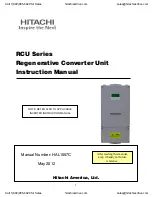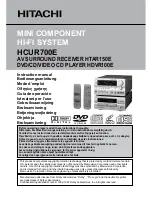
Step 1: Designing the Installation
445-0089-01-01
3–7
DC Cabling
This includes all the cables and connectors between the batteries, the DC
disconnect and over-current protection device, and the PROsine. All installations
require multi-strand insulated cables as well as disconnect and over-current
devices. DC cable sizes are indicated by AWG notation or MCM notation. Under
the AWG standard, a larger gauge number indicates a smaller wire diameter.
Under the MCM standard, a larger number indicates a larger cable. Wire size is
usually marked on the cables for sizes this large. Table 3-2 specifies the minimum
DC cable size and maximum fuse size for the PROsine.
The DC cables must be
copper and must be rated 75°C minimum.
The cables should be terminated
with lugs that fit the DC stud terminals snugly (8 mm or 5/16 in. hole size).
DC Disconnects and
Over-Current
Devices
The DC circuit from the battery to the PROsine must be equipped with a
disconnect and over-current device. This usually consists of a circuit breaker, a
“fused-disconnect,” or a separate fuse and DC disconnect. Do not confuse AC
circuit breakers with DC circuit breakers. They are not interchangeable. The
rating of the fuse or breaker must be matched to the size of cables used in
accordance with the applicable installation codes. The breaker or disconnect and
fuse should be located as close as possible to the battery, in the positive cable.
Applicable codes may limit how far the protection can be from the battery.
Batteries
Every PROsine system requires a deep-cycle battery or group of batteries that
provide the DC current that the PROsine converts to AC. Different battery types
and sizes are available; many of these are discussed in Application Note: Battery
Banks for Inverter Systems (976-0114-01-01). Automotive-type starting or
“cranking” batteries are not recommended, except for temporary emergency use.
The PROsine uses 12-volt battery banks.
Ground Fault
Circuit Interrupters
(GFCIs)
A GFCI is a device that de-energizes a circuit when a current to ground exceeds a
specified value that is less than that required to blow the circuit breaker. GFCIs
are intended to protect people from electric shocks and are usually required in wet
or damp locations.
Table 3-2
Required DC Cable and Fuse Size
DC Cable Length
Cable Size
Fuse Amps
Less than 6 feet
250MCM
300A class T
Between 6 and 12 feet
350MCM
300A class T
Important:
Using the correct cable size is critical to achieving the rated performance of
the PROsine unit. When starting a heavy load the PROsine can draw current surges from
the battery of up to 600A. If the wire is too small the voltage drop from this surge will
result in a voltage at the PROsine terminals that is too low for the PROsine to operate
correctly. The PROsine may appear to operate correctly with smaller cables until a heavy
load such as an air conditioner attempts to start - then the unit may work correctly
sometimes and not work correctly other times.
Summary of Contents for PROsine 2.0
Page 1: ...PROsine 2 0 Inverter Charger User s Manual...
Page 2: ......
Page 3: ...PROsine 2 0 Inverter Charger User s Manual...
Page 8: ...vi...
Page 12: ...x...
Page 18: ...xvi...
Page 20: ...xviii...
Page 68: ...Installation 3 26 445 0089 01 01...
Page 120: ...Series Operation 7 12 445 0089 01 01...
Page 128: ...A 8...
Page 132: ...B 4...
Page 147: ......
















































